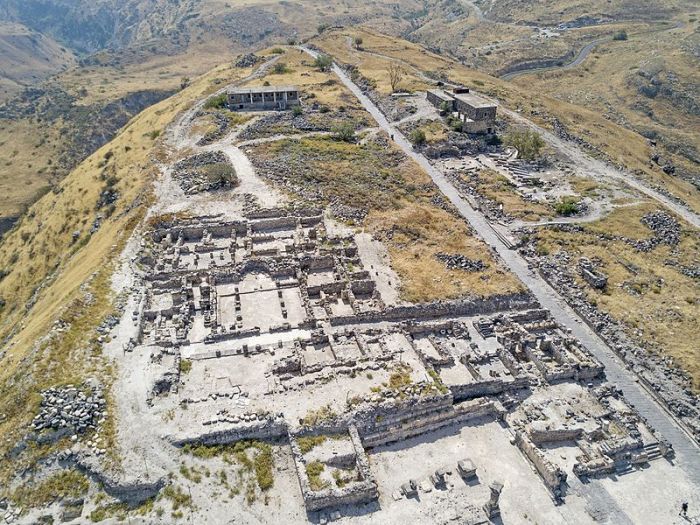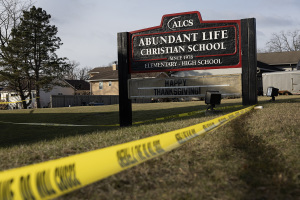Marxist-influenced scholarship was wrong about Jesus, Galilee, and poverty

Context matters. When Abraham Lincoln said during the Gettysburg address that the founding fathers were "dedicated to the proposition that all men are created equal," the context of where and when he was speaking is important. The same goes for when Martin Luther King Jr. said, "I have a dream," and when Ronald Reagan said, "Tear down this wall." For all of them, their message was specific to the time, place, and audience.
Those speeches are still in relatively-recent memory for Americans, so we're aware of the historical and cultural context surrounding them. When reading the gospels, however, I think a lot of the contextual importance is lost on us. Even worse than mere ignorance of the context is imposing our own agenda and biases. What kind of town was Galilee? Were there reasons for Jesus to begin His ministry there? Archaeologist Professor David Fiensy has aimed to, as much as possible, definitively answer questions like these. Professor Fiensy is one of the foremost archaeological scholars studying the holy land and has published many fascinating books on his findings, the most recent of which is The Archaeology of Daily Life: Ordinary Persons in Late Second Temple Israel. I recently had the pleasure of discussing the book with Professor Fiensy on Christian Post's Business in the Kingdom podcast.
Here are some excerpts from our conversation, lightly edited for length and clarity:
Galilee was a commercial fish exporter along an ancient highway
David: "Just south of Nazareth you've got a major economic through-way running up the west side of the Sea of Galilee not far from Capernaum. Capernaum wasn't just a fishing village."
Jerry: "It was a trade route! Let's talk about fishing a little bit. I grew up on a river in a poor community, so a lot of the adults I knew would go out and fish for food. I think a lot of what we're seeing in the gospel accounts is commercial fishing. James and John have got a crew working for them. Fish is being dehydrated and salted and shipped. There's an element of commercial fishing that I'm not sure we're all aware of."
David: "Oh, sure."
Jerry: "That would make sense with the Via Maris [a major ancient trade route] because it's right along the road, you can just send fish up to Damascus."
David: "You have literary sources that talk about places like Magdala, a city of maybe 4000-5000 people, where they would catch tons of fish. They discovered these vats in Magdala where they would put live fish until they were ready to kill them, cut them up, and put them in salt water, the brine. Then they put the whole thing into a barrel and ship it all over Israel and beyond.
"Now they're studying fish bones. Not just human bones, but fish bones and animal bones, There are fish bones that were caught evidently in either the Sea of Galilee or the Jordan River way down south of the Dead Sea. So they traded these fish far into the desert."
"So they're eating tilapia all over Israel, not just in Galilee but all over the place you find tilapia bones. But they also find bones inland from either the Red Sea or the Mediterranean. They're not catching that fish locally, they're transporting pickled fish all over the place."
Did the social network of the 1st century help Jesus spread His message?
Jerry: "Having read your book and other studies of path and road systems, I'm getting the impression that lower Galilee was kind of a thoroughfare. Not just the Via Maris from Egypt up to Damascus, but also in other ways kind of pulled together by foot paths and routes that might connect the old world of Iraq, Babylon, and Persia with Tyre and Sidon, some of those port cities."
David: "Well there were lots of what they would call roads, I would call hiking trails. Some of them I'd even call goat paths! But if you ever travel through the mountains, even having a goat path is a huge advantage. You want a path. So these roads have been traced and presented by James Strange the elder in volume 1 of the book Galilee in the Late Second Temple and Mishnaic Periods. I co-edited volume 2 with his son, James Riely Strange. He has a chapter there on the roads of Galilee."
Jerry: "Yeah that's a great book, and that section really influenced me. It was sort of networked, right? It was a fairly possible area, or at least that's the impression I'm getting."
David: "I call that the social network of the first century."
Jerry: "Yes! It's peer-to-peer."
David: "If you walk to a village two miles away, you can get there in no time on a path. Without a path it's really awkward to walk over these rocky hills. With a path you can just zip over there, talk to your fellow neighboring village and share news pretty readily. So it is like the social network of the first century."
How Marxism influenced archaeological conclusions
Jerry: "As I'm reading your books, I'm getting a sense that you are to some degree pushing back against a 1970's and early 80's social science-based theological consensus that they must have been poor based on models as opposed to a focus on the material remains. Maybe upper Galilee might be different, but the lower Galilean poverty narrative probably got a little oversold and in some academic circles. Do I have you right?"
David: "Yeah, I think in general the idea that most peasant farmers, most working-class people, were near starvation was overplayed. In every society we have people like that. We have in the United States people who live near starvation. People are food-challenged right now in this country. The question is, how prevalent is that, how widespread? Coming out of the social movements in the United States of the 70s and 80s, the three great social movements drove the social science investigation of the New Testament. There's a lot of you might say social anger directed toward the New Testament text. There was a lot of use of what I would call Marxist models. And I'm not disparaging Marxist models..."
Jerry: "I am! I'm an economist, I get to disparage Marxist models."
David: "I think they got into the class conflict. I'm not saying that there weren't class conflicts, but the more you study the data, the less enthusiastic I am with the results that were popping up in the 80s."
Jerry Bowyer is financial economist, president of Bowyer Research, and author of “The Maker Versus the Takers: What Jesus Really Said About Social Justice and Economics.”





























